“Jack London Was Standing Right There!”
After moving from their ranch in Healdsburg, the Bridingers moved to Santa Rosa. They lived for awhile “in town,” then moved to a ranch outside of town.
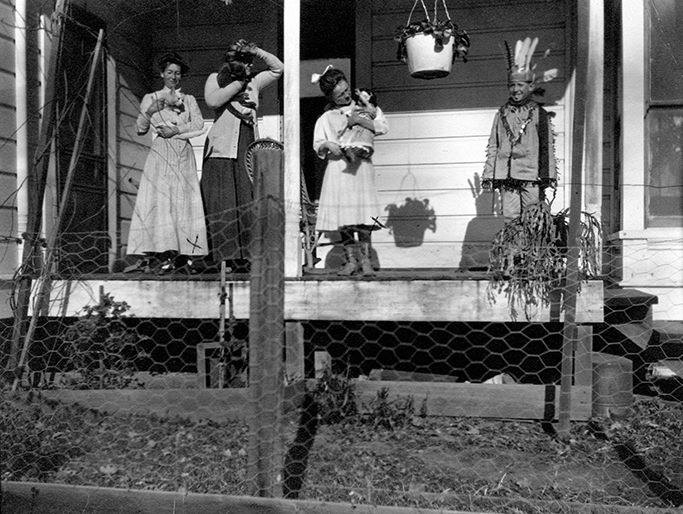
Helen, Santa Rosa. No indication of Helen’s friend with the head dress and suede clothing.
Before Mexican and Spanish settlers were in Santa Rosa in the early 1800’s, Pomo, Miwok, and Wappo Indians populated the area. The first known permanent European settlement of Santa Rosa was the homestead of the Carrillo family. By the 1850s, a Wells Fargo post and general store were established in what is now downtown Santa Rosa.

The Occidental Hotel Building, 4th and B, Santa Rosa
In the mid-1850s, several prominent locals, including Julio Carrillo, son of Maria Carrillo, laid out the grid street pattern for Santa Rosa with a public square in the center, a pattern which largely remains as the street pattern for downtown Santa Rosa to this day despite changes to the central square, now called Old Courthouse Square.
In 1867, the county recognized Santa Rosa as an incorporated city and in 1868 the state officially confirmed the incorporation, making it officially the third incorporated city in Sonoma County, after Petaluma, incorporated in 1858, and Healdsburg, incorporated in 1867.

The Luther Burbank Rose Parade, Santa Rosa. Note the same Occidental Hotel (left) as in the previous photo. The Hotel building was replaced by a typical looking shopping mall. The building seen in the middle remains today, but heavily remodeled.
Luther Burbank, the famed horticulturist, made his home in Santa Rosa for more than fifty years. On his garden site and in nearby Sebastopol, Burbank conducted the plant-breeding experiments that brought him world renown. His objective was to improve the quality of plants and thereby increase the world’s food supply. In his working career Burbank introduced more than 800 new varieties of plants including over 200 varieties of fruits, many vegetables, nuts and grains, and hundreds of ornamental flowers. Note Southern California’s city of Burbank has no connection to Luther Burbank. It was David Burbank, a dentist, that founded Burbank, California.

“Then we moved to Santa Rosa and I went to grammar school there. I skipped 3rd grade and went into 4th grade.
I enjoyed English. One teacher I thought was terrific; she was named Francis L. Omira.”

“All the kids called Mrs. Omira “funny little old maid.” Kids told me “Gee, I hope you don’t get her, blah, blah, blah–she’s mean! But I had her and I thought she was one of the best teachers I ever had. We did a lot of writing and composition–I enjoyed her. Isn’t that funny how people will put somebody down? She was a great teacher. I just got along wonderfully with her. I learned more from her than any other teacher I had.”
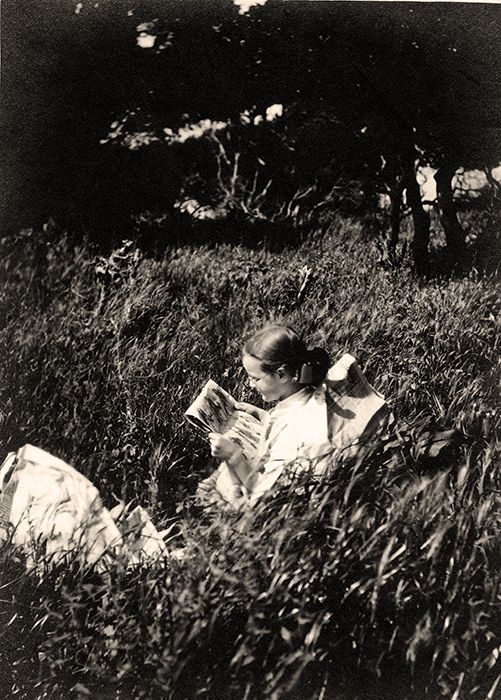
“Mother Bridinger was very strict. I had one teacher who assigned a book to read. I got the book out of the library and Mother wouldn’t let me read it. “Oh, that’s NOT for young people!” So I had to take it back and she told the Librarian to be very careful about what I picked out–which was stupid! I wasn’t even allowed to read the newspaper!”

“They’d take me to movies. My mother got indignant about something she’d get up and make us leave!”

Helen, Lawrence; right.
“When we lived on the ranch at Healdsburg a boy came to live with us named Lawrence–they were going to adopt him. When we moved to Santa Rosa, Lawrence was in his first year of high school.
“Leon piled so much ranch work on him to the point he ran away several times. One time he wanted me to run away with him to the mountains-and painted such a beautiful picture. You know how kids are. I didn’t go. But finally his real mother came to get him when I was 13 or 14. Lawrence later joined the Army and was a career Army man–and we stayed in touch.”

Leon and Helen.
“Mother Bridinger and I got along fine. But Leon, I didn’t like him. As a child I liked him–you know how little kids are impressed. He’d make faces and tease me. But as I got older I could not stand him. He called himself “Pennsylvania Dutch.” But there was nothing Dutch about him, he was Ohio German! Opinionated, stubborn–he knew it all. Nobody else knew anything.”
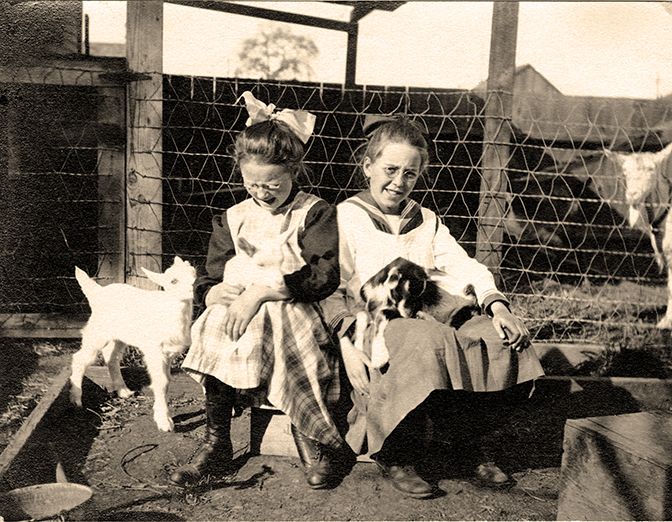
“Leon had a lot of goats. This little friend and I used to heard the goats. We’d poke them along the hillside so they’d eat. We’d watch them and then bring them back. A man and his wife worked on the ranch–they’d milk the goats. Leon would too–I guess. He was working at the bank.
At the county fair he would exhibit them. I can remember I posed for a picture pretending to milk the goats! I think I was about 13 then. Jack London was standing right there!”
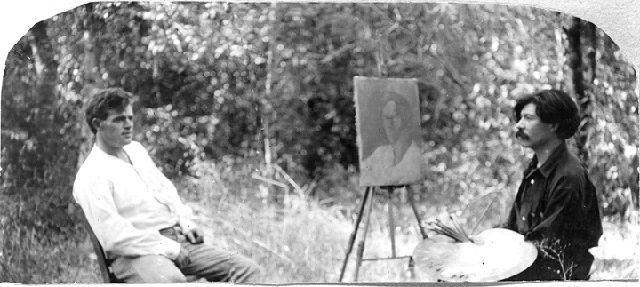
Image, Piedmont Historical Photo Archive
Jack London and Xaviar Martinez. Both London and Martinez were members of the Piedmont Bohemian set in the early 1900’s. This picture was taken after London had moved to Sonoma County and shows him sitting for a portrait by Martinez. London’s most famous works are The Call of the Wild, White Fang, The Sea-Wolf, The Iron Heel, and Martin Eden.
One of Jack London’s books “Valley of the Moon” is named for the section of the Sonoma Valley around Glen Ellen with the same name.
Next Chapter, “Valley of the Moon.” The Bridingers take a drive to Glen Ellen, to the town of Sonoma, and go camping near the Russian River.
2 COMMENTS
Helen’s Dolls
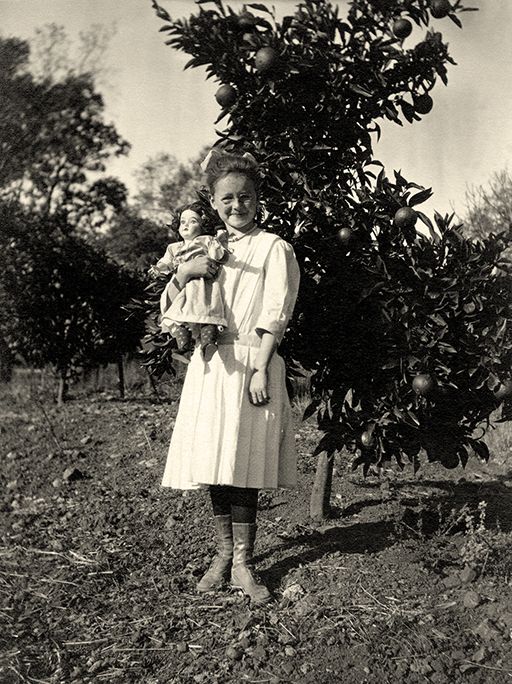
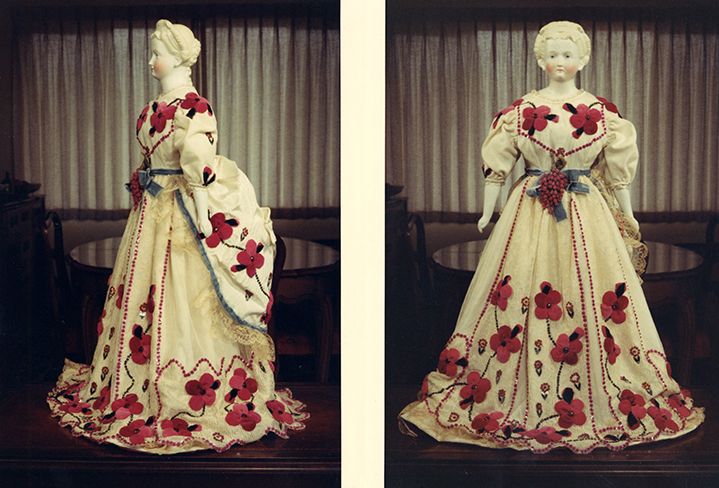
Helen kept these dolls her entire life. The head, hands and feet were made of porcelain. The dresses were ornate and detailed. She once showed me a box of these dolls. The fabric on some had fallen apart, revealing straw “bodies” underneath.
Helen restored this doll. I believe she told me it is a Civil War era doll, a Delano family heirloom. I first remember seeing this doll displayed at their Amberwood Drive apartment living room in South Pasadena, mid 1960’s.
May Delano Bridinger, left. This is a cyanotype print. Not only to add color the monochrome print, but served a print preservative too.
Clearly a playful shot of a fun outing.
It’s fun to go back in time with these pictures. I question whether all of our modern conveniences have made life better.
Jack London was a big deal. Fascinating life. Sea-Wolf was one of my favorites.